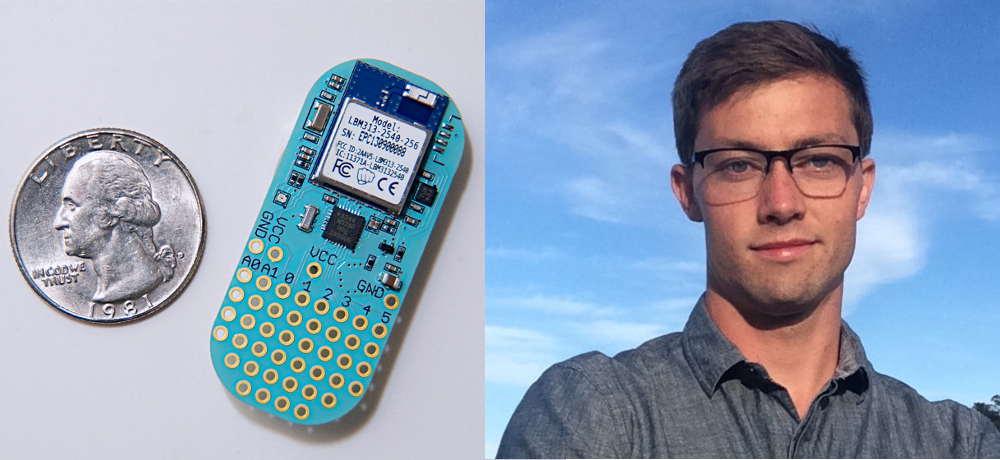Podcast: Play in new window | Download
Subscribe: Apple Podcasts | RSS
Welcome, Colin Karpfinger of Punch Through Design!
- Colin is from Milwaukee (woot, midwest). He went to school in Minneapolis and started his consulting company there. There is still a PunchThrough office there.
- Their first official product was the LightBlue app, a development application on the iPhone.
- The first hardware product was the Light Blue Bean, a bluetooth communicating, Arduino compatible development board. It costs about $26-$30 per unit.
- The Light Blue Bean integrates their other hardware product, the LBM313 module. These cost about $8 per module.
- They had to go through FCC cert. Also IC, CE, MIC, KCC.
- The general costs to get certified was $40K and 2-3 months.
- There is also a board that helps to breakout and test the Light Blue Bean, the Vegas Lounge
- PunchThrough rolled their own crowdfunding solution when launching the bean (no longer available but you can view their backer updates on their blog). They also ticked the price up each day. This resulted in pre-selling over 9000 units.
- Apple salts the BT id for security.
- The Light Blue Bean was manufactured in Korea and delivered via a fulfillment service.
- The testing of the beans was gamified for the manufacturing staff. They showed some of these on their Vimeo site.
LightBlue Bean Test Jig from Punch Through on Vimeo. - The LBM313 uses 0201 parts and has square pads under the module. This can be soldered directly to another PCB. The Light Blue Bean is only a 2 layer board.
- The modules uses the CC2540 chipset from TI.
- The latency is one of the limiting factors. The Miselu (iPad keyboard launched on kickstarter) needed to control for this.
- Another music based product, the Retronyms Wej is another music based product. It is a tabletop, open source MIDI unit.
- So why Apple support to start with? It’s the Bluetooth stack. Apple added non-approved features and now they are getting pushed back into the bluetooth standard.
- These relate to the central and peripheral roles – sensor is usually peripheral, phone is usually the central. The iPhone can be both.
- The LightBlue app can simulate hardware. This is probably why FitBit recommended it as the “Find my hardware” app of choice.
- There is now an Android SDK for BTLE. The Windows based development tools are also coming.
- Now it is possible to run your Light Blue Bean apps from an iPhone or iPad. Interestingly, the compiler isn’t on the iPhone/iPad app, it’s on the cloud (and can also sync sketches with your Dropbox).
- Punch Through is hiring! Send a resume and portfolio of projects to info at punchthrough dot com.
- They are also giving away beans to the top 10 holiday bean usage ideas!
You can follow Colin or Punch Through on Twitter. Many thanks to Colin for being on the show and telling us about balancing product design and consulting and the Light Blue Bean! Be sure to pick one up for yourself and try it out today!


Dave, have you considered https://www.enocean.com/en/radio-technology/ for low power RF?
Thank you for the great weekly podcasts and great show notes.
Interesting story plus a few neat products. Appreciate for sharing it.